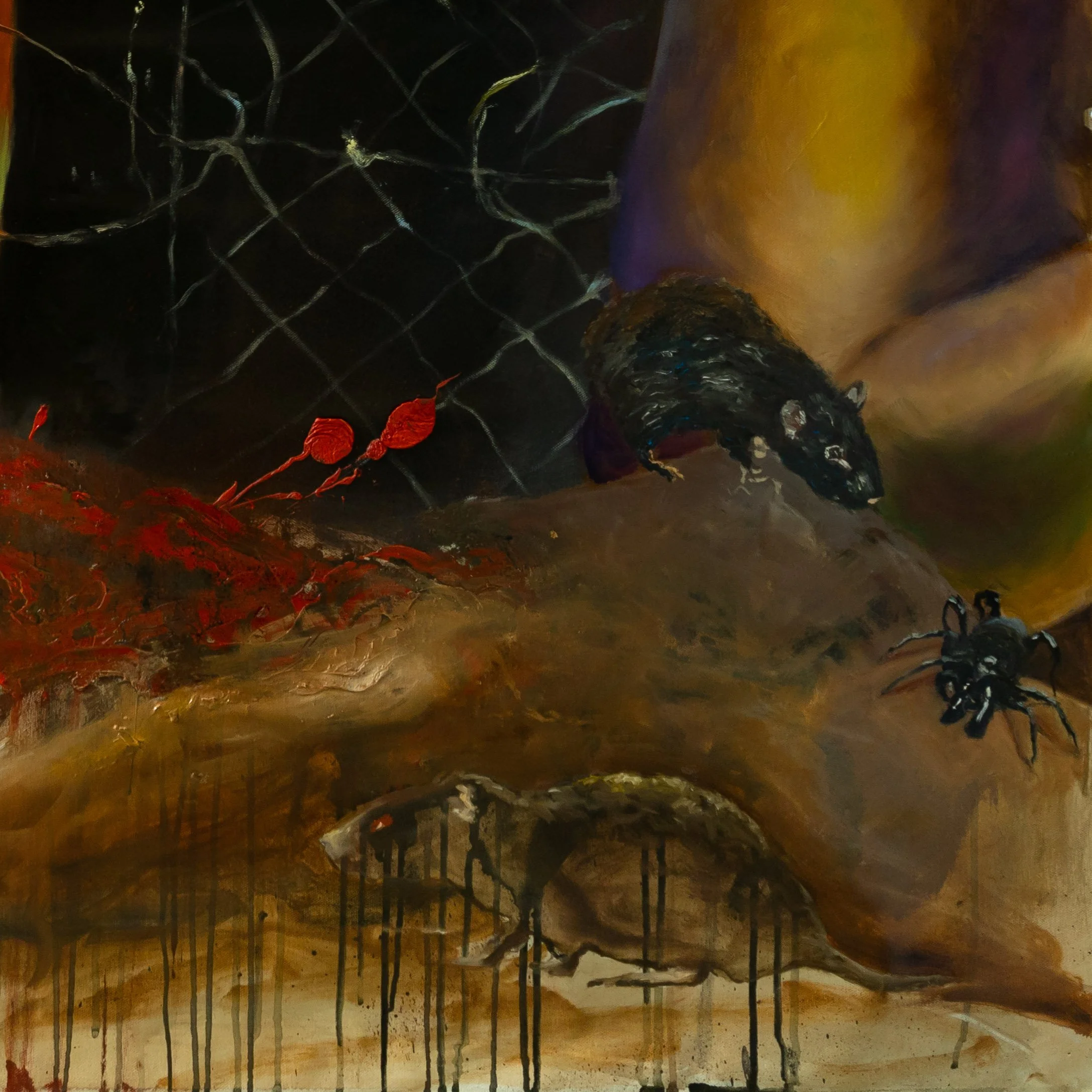“.. Wazzo, les hommes frappent le zinc, jette une serpillère sur mes cuisses ; au lieu de foutre, les larmes bouillonnent dans mon ventre, le venin de la tarentule a glacé mon sang, tire-moi par les pieds vers le soleil ;”
“.. Wazzo, men thumping on counter : throw cloth over my thighs ; tears, not jissom, boiling in my belly, tarantula's venom freezing my blood : pull feet, pull me into sun ;”
— Éden, Éden, Éden (1970), Pierre Guyotat
EDEN #1 | oil on canvas | 156 x 105 cm | 2022
UK
Eden, Eden, Eden, by Pierre Guyotat is a text of great intensity that came out on 9 September 1970 and was immediately censored by the French state. It is set during colonial occupation, in a boys’ brothel where whores intermingle with soldiers in long and violent prostitutional episodes. The steadfast rhythm leaves the reader no respite, and the book carries the seeds of a new language which redefines the contours of poetry and pushes sexual subversion to its limits.
The passage I have chosen to illustrate, and from which I have distanced myself somewhat, briefly departs from a descriptive style to give the floor to one of the protagonists of the story, Khamssieh, who has been reduced to the condition of a bitch.
Violent actions (‘hit’, ‘throw’), the alternation between the icy coldness of paralysis (that of death and of murder) and the kindling of tears that ‘boil’ finally foreshadow the passage from darkness to light (‘pull feet, pull me into the sun’). This is what interested me directly and is why I used chiaroscuro to illustrate it. Certain elements relating in particular to filth (rats), the hostility of fauna and war (tarantulas, barbed wire), bodily fluids (drippings) that are so overwhelmingly present throughout the work, and the architecture of the barracks (beams, frameworks) complete the tone of the work.
FR
Éden, Éden, Éden, de Pierre Guyotat est un texte d’une grande intensité, paru le 9 septembre 1970 et immédiatement censuré par le gouvernement français. Sur fond d’occupation coloniale, l’action prend place dans un bordel de garçons où les putains se mêlent aux soldats dans de longues et violentes séquences prostitutionnelles. Animé d’un rythme inébranlable, ne laissant aucun répit au lecteur, le livre porte en lui les germes d’une langue nouvelle qui redéfinit les contours de la poésie et pousse au plus loin la subversion sexuelle.
Le passage que j’ai choisi d’illustrer, non sans une certaine distance, sort un instant du cadre descriptif pour donner la parole à l’un des ‘héros’ du récit, Khamssieh, réduit à l’état de putain.
L’action violente (‘frappent’, ‘jette’), l’alternance entre le froid glacial de la paralysie (celui de la mort, du meurtre) et l’embrasement des larmes qui ‘bouillonnent’ laisse finalement présager le passage de l’ombre à la lumière (‘tire-moi par les pieds vers le soleil’). C’est cela qui m’a directement intéressé et justifié cette approche picturale en clair-obscur. Certains éléments liés notamment à la crasse (les rats), à l’hostilité de la faune et de la guerre (tarentule, barbelé), aux fluides corporels (drippings) ô combien présents dans toute l’oeuvre, à l’architecture des baraquements (poutres, charpentes) achèvent de rythmer la composition.

